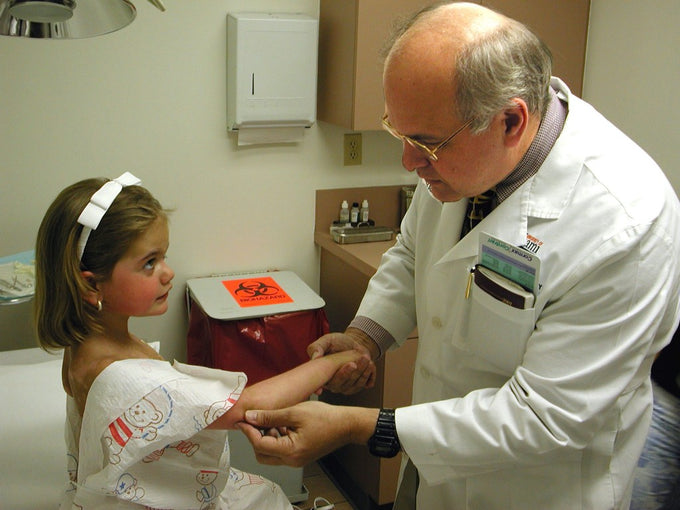Preparing Your Child for a Dermatology Appointment

In 2013, a study published in the Journal Pediatrics indicated that pediatric melanoma rates are rising in the United States, particularly in the age group of those between 15 to 19 years, by approximately 2% each year.
The National Cancer Institute estimates that approximately 500 children in America are diagnosed each year.
Did you know that melanoma in children and teens looks different than it does for adults and grows faster? If caught early there is a good chance of survival, but if left to spread it can be deadly.
Causes of Childhood Melanoma
What could cause childhood Melanoma? Here are some of the most common causes:
- Sun sensitivity disorders
- Family history of melanoma or skin cancer
- Mom-to-infant transmission
- Tanning bed use (teens 14-18 years old)
Sometimes children can develop melanoma or skin cancer because they exhibit some of the high risk factors; a large number of moles, family history, fair-skinned, and blue eyed.
Why Early Detection Is So Important
As with most illnesses sometimes there is no reason at all. No matter the cause, early detection is important. Children (as well as adults) should have a yearly dermatologist appointment with a board-certified dermatologist.
If there is a family history of melanoma and atypical moles then there should be examination every 3 to 6 months. Children in these families should have their first exam by the age of 10.
Preparing your child for their first dermatologist appointment is an important event. There will be a lot of questions and possibly some hesitation. Below are ways you can make each dermatology appointment a success!
Treat a dermatologist appointment like a yearly pediatrician wellness check-up.
How to Set Your Child Up for Success During a Dermatologist Appointment
Steps to a successful dermatologist appointment include the following:
- Talk with your child about who a dermatologist is and let them ask questions.
- If you don’t have a dermatologist the American Academy of Dermatology provides a quick and easy Derm Finder.
- Request an appropriate amount of time for the appointment with the scheduler.
- Ask for a total body skin examination known, including a request for a gown if one is not provided.
Remember: During this whole process you (as a parent) have the option to be present during the appointment, ask questions and to voice your concern.
Studies have shown that a dermatologist’s instructions may help young people understand that sun exposure and tanning harms their skin. The message of sun safe habits should begin early, including have your children wear broad-spectrum sunscreen and UPF 50+ clothing.






